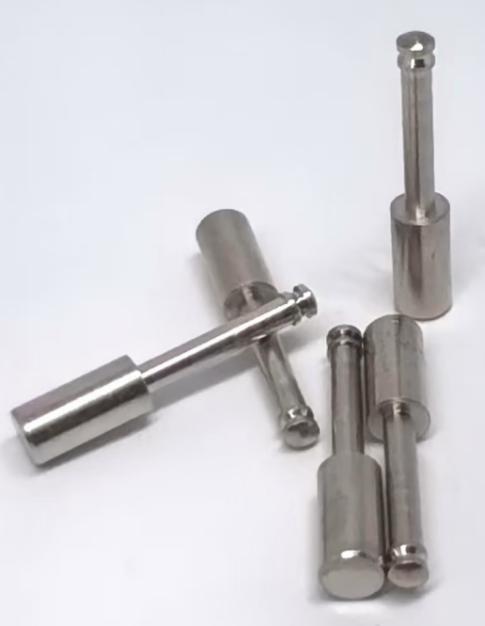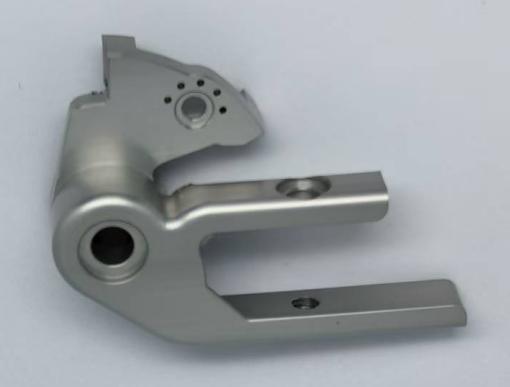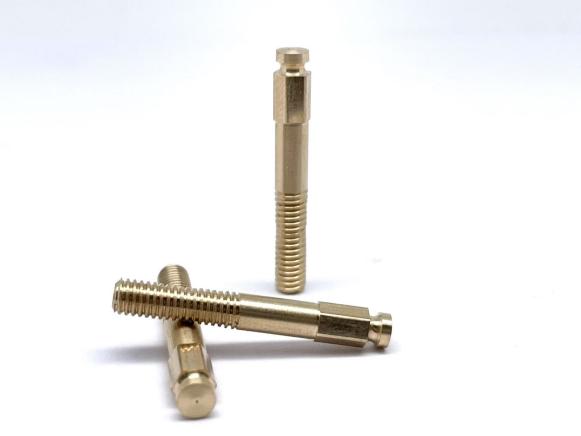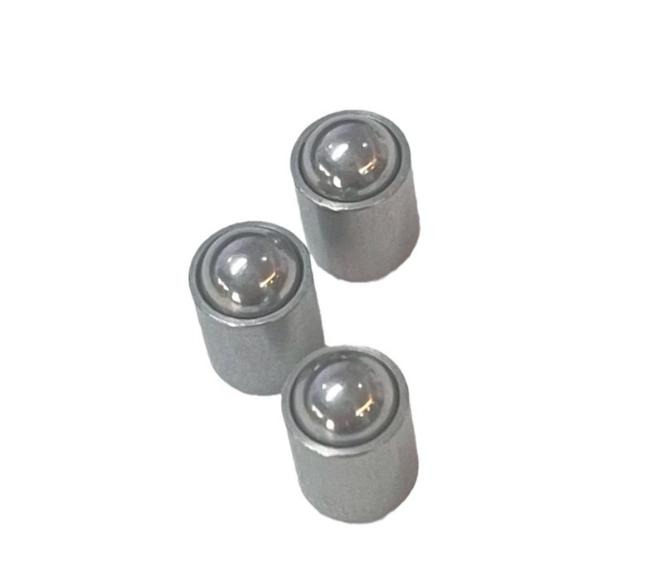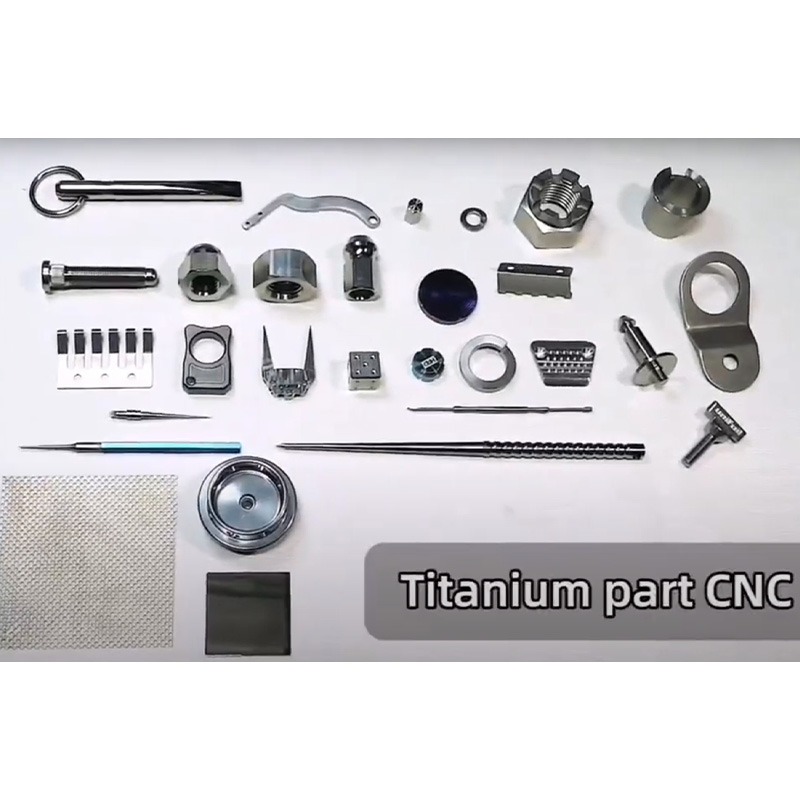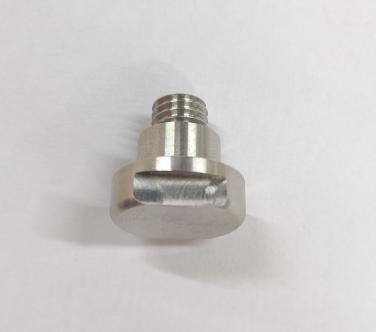Rapid Prototyping vs. Mass Production in CNC Parts
The roles of rapid prototyping and mass production in modern manufacturing are both vital, especially within the context of CNC parts. Rapid prototyping and mass production, while differing in methodology, automation, and application focus, does share some aspects of precision and automation. Discerning the differences between the two should assist manufacturers and engineers in picking the most appropriate strategy.

Table of Contents
Understanding Rapid Prototyping in CNC Parts
Rapid prototyping in the context of CNC machining entails the efficient and economical production of parts aimed at evaluation, testing, and design improvement. When the objective is to construct a physical prototype for rapid evaluation in terms of form, fit, and function, it presents a solution. Within this context, CNC machining eliminates the need for complex tooling and reduces lead time, in stark contrast to traditional tooling.
Key Steps
- CAD Model Creation: The design process starts with a 3D CAD model, which serves as the prototype blueprint.
- CNC Programming: The CAD model is transformed into machine code (G-code) which directs CNC machines for the production process.
- Machining: The CNC machine cuts, shapes, and drills the part from raw material (like metal, plastic, and composites) according fo the specified design.
- Testing & Evaluation: The prototype is tested to determine if it meets the desired specifications and design adjustments are made accordingly before proceeding to production in full scale.
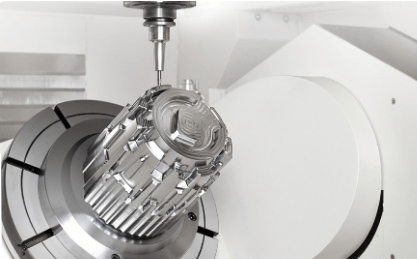
Advantages
- Speed and Time Efficiency: Perhaps the most significant advantage of CNC rapid prototyping lies in the time taken to manufacture prototypes compared to traditional approaches, which may spend weeks to produce a prototype. Most parts are produced in hours or days. Efficiency in the production of one component translates to time saved in the entire product development cycle as designers are allowed to rapidly validate and iterate on designs.
- Precision and Accuracy: The same technologies that provide rapid prototyping also provide high precision and repeatability. This feature of CNC machining makes it valuable for prototypes that possess critical tolerances and complex features. The closeness of the CNC machining to the final product ensures that the prototype is accurate for form, fit and function tests.
- Flexibility of Materials: CNC rapid prototyping accommodates a diverse range of materials, such as a range of metals including aluminum, steel, and titanium, as well as engineering plastics like ABS and polycarbonate, and composites such as carbon fiber and fiberglass. This range of choice means that designers can prototype using materials that are nearly identical to those that will be used in mass production, leading to more precise and reliable testing.
- Cost-Effective for Low Volumes: For low-volume production or just one-off prototypes, CNC machining can be more economical than older production techniques that involve costly molds, dies, or casting tools. The reason for this is that CNC machines can produce prototypes without the necessity of customized tools, thereby lowering the initial commercial outlay, and allowing design modifications to be made without excessive cost.
- Design Flexibility and Iteration: CNC rapid prototyping provides a valuable and powerful tool for design iteration through the rapid change and update of a CAD model. This is enabled by the new prototypes that can be generated in a matter of mere hours that allow for the testing of new or modified designs..
Limitations
- High Initial Setup Costs: CNC prototyping is more economically viable for smaller production runs than for larger ones. This is because CNC machines are expensive to set up, particularly for intricate or tailored components. The time and effort required for machine programming and tooling set up can be quite extensive. In the case of simple prototypes, the cost of production per unit can exceed that of more rapid methods of prototyping such as 3D printing, which does not entail the same investment in specialized tooling.
- Speed Limitations for Complex Parts: Producing prototypes on CNC machines can be rapid, but the process can be slowed by the need to produce intricate designs and geometries. Additional setup and machining time are particularly true for designs that feature complex internal structures or thin walls. Very complex designs may require other methods such as additive manufacturing (3D printing), which allows for the rapid construction of complex designs and geometries while saving on setup time compared to CNC.
- Material Restrictions: CNC machining can only utilize materials available in standard shapes and sizes such as rods, sheets, and blocks. For some custom materials or unique properties, such as high-temperature resistance, CNC rapid prototyping may not be feasible without specialized materials or machines. Additionally, CNC machining cannot create parts using some advanced materials that are better suited for additive manufacturing or injection molding.
- Tool Wear and Maintenance: CNC machines come with cutting tools that can wear out over time. For smaller production runs, the costs and effects of damaged tools would be considered minor, but for bigger production runs and intricate detailed parts, the costs associated with replacing worn tools can be considerable. To retain CNC precision, maintenance on the machine and toolers is necessary and such maintenance can incur downtime that will affect the prototyping schedule.
Common Applications
This chart provides a quick overview of the various applications of rapid prototyping in CNC parts, showcasing its versatility across industries.
| Application | Description |
| Product Design Validation | Used to create functional prototypes to test form, fit, and function of a design before mass production. |
| Design Iteration | Allows quick iterations of design concepts to improve or refine parts based on testing and feedback. |
| Low-Volume Production | Ideal for producing small-batch CNC machining parts when high-volume mass production isn’t necessary. |
| Customized Parts | Suitable for creating custom CNC machining components or small, specialized parts for unique applications. |
| Functional Testing | Prototypes are used for testing the physical properties and performance of parts under real-world conditions. |
| Tooling and Mold Prototypes | Used to create prototypes for molds, jigs, and fixtures to verify their design before full-scale production. |
| Complex Geometries and Prototypes | Enables the creation of CNC parts with complex geometries or intricate details that might be challenging to produce using traditional methods. |
| Medical Devices and Implants | Rapid prototyping is used to produce patient-specific implants, prosthetics, and medical tools for testing before final production. |
| Aerospace and Automotive Prototyping | Creates prototypes of components for the aerospace and automotive industries, where precision and design testing are critical. |
| Consumer Electronics | Used to develop prototypes for gadgets, smartphones, and wearable tech to evaluate their functionality and design. |
| Architectural Models | Rapid prototyping helps create architectural scale models or detailed components for visual and structural analysis. |
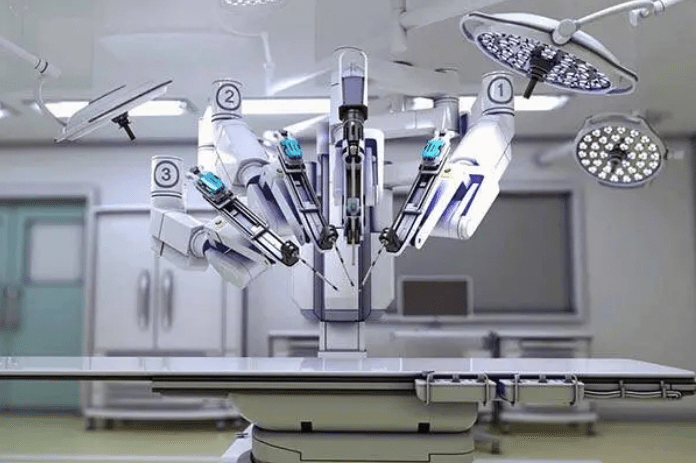
Understanding Mass Production in CNC Parts
Mass production in CNC machining refers to the production of parts in bulk using computer-controlled machines (CNC mills, lathes, and routers). The starting point is usually a digital CAD (Computer-Aided Design) model of the part, which is subsequently converted into machine code (G-code), and the CNC machines utilize this code to perform cutting, drilling, and shaping tasks.
Key Aspects
- Automation: The machines perform tasks without the assistance of humans, thus, facilitating the production of large quantities with minimal human effort.
- Tooling and Setup: The design and production of specialized large-scale production tools, fixtures, and jigs, therefore, the speed and precision of the production process and uniformity of the parts produced.
- Speed and Efficiency: In a lean production environment, the goal is to produce a high quantity of homogeneous components within a limited timeframe. In this context, CNC machines become particularly beneficial, as they can operate for extended periods without the need for an operator, and they can run for days at a time without the need for any downtime.
How Mass Production Works in CNC Parts
This chart outlines the process of mass production in CNC parts, from design to final inspection, highlighting the steps that ensure high-volume, high-precision manufacturing with minimal downtime.
| Step | Description |
| 1. Design and Engineering | A detailed 3D CAD model is created, and machine programs (G-code) are generated to define the CNC operations for part fabrication. |
| 2. Tooling and Setup | Specialized tooling (cutting tools, fixtures, and jigs) is created or selected, and CNC machines are set up to begin production. |
| 3. Material Selection | Materials (metals, plastics, composites) are chosen based on the part’s performance requirements, durability, and manufacturability. |
| 4. Machine Programming | CNC machines are programmed with precise instructions (G-code) to automate the cutting, drilling, and shaping processes. |
| 5. Production Run Begins | Once everything is set up, production begins, with CNC machines running continuously (sometimes 24/7) to produce high volumes of parts. |
| 6. In-Process Quality Control | Automated monitoring systems are used to check parts for dimensional accuracy, consistency, and any defects during the machining process. |
| 7. Post-Production Inspection | Parts are inspected for quality, using methods like dimensional checks, surface finish evaluations, and functional testing if needed. |
| 8. Packaging and Shipping | Once parts pass inspection, they are packaged and shipped in bulk or as required for further assembly or delivery. |
| 9. Ongoing Maintenance | Regular maintenance of CNC machines and tooling ensures the continued efficiency and quality of the production process over time. |
Advantages
- Greater Precision and Consistency: CNC machines are particularly well-suited for industries such as aerospace and automotive, where the tolerances and dimensions of components must be maintained within very narrow limits. In these applications, the machines will be set up to produce high volumes of identical components, with very little variation, and they will do so repeatedly.
- Speed and Efficiency: Again, CNC machines are particularly well-suited for mass production. Once the machines are set up for production, they can run for extended periods without operator intervention, and they will do so with minimal downtime. Automated CNC systems are equipped with loaders and unloaders, and they will be disengaged the moment the production requirements are met.
- Scalability: Production levels can be changed easily by changing machine settings, tool configurations, or adding machines. This makes CNC machining ideal for industries that have fluctuating production requirements.
- Decrease in Human Mistakes: The increased automation of processes and usage of CNC machines diminish the probability of human mistakes occurring in the manufacturing process. The ability of CNC machines to repeat processes with the same accuracy and precision produces parts to their specifications with only a micro level of deviation.
- Material Utilization: CNC machines utilize materials in an effective and efficient manner. Due to the accuracy in designing toolpaths and the low level of waste created during the process, CNC machining maximizes the yield of the materials, reducing the amount of scrap and thereby increasing the cost-effectiveness of the process.

Limitations
- High Initial Setup Costs: Despite the cost-effectiveness of CNC machining in high-volume production scenarios, the high initial outlay for the first setup can be a deterring factor. The custom tooling, fixtures, and programming for the respective machines can take a considerable amount of time. Due to the high initial setup costs, CNC mass production also tends to be economically unfeasible for small-batch production or low-volume production runs.
- Limited Design Flexibility: Once a CNC machine is set up to manufacture a certain design, altering it tends to be an expensive and long process. The ability to design CNC machines for mass production to take on new tasks often entails retooling, recalibrating, and reprogramming the system. This can be an exasperating disadvantage for enterprises in sectors that deal with high-velocity design alterations, innovation, or iteration cycles.
- Tool Wear and Maintenance: Regarding CNC machines, regular maintenance is paramount, and tools tend to wear out over time with machines that are used in mass production. For industries that focus on high-volume production runs, tools will most likely have to be replaced frequently, and that certainly has an impact on operational costs. Waiting for machines to undergo maintenance or to change tools can be detrimental to production schedules.
- Complexity in Small Parts: CNC machines are excellent for producing large, simple geometric parts and for reasonable simple shapes, however the mass production of very small and especially intricate parts, may prove to be difficult and expensive with CNC machines.
Common Applications
This chart outlines the broad range of mass production applications in CNC parts, highlighting industries such as automotive, aerospace, medical devices, and electronics, where high-volume manufacturing and consistency are paramount.
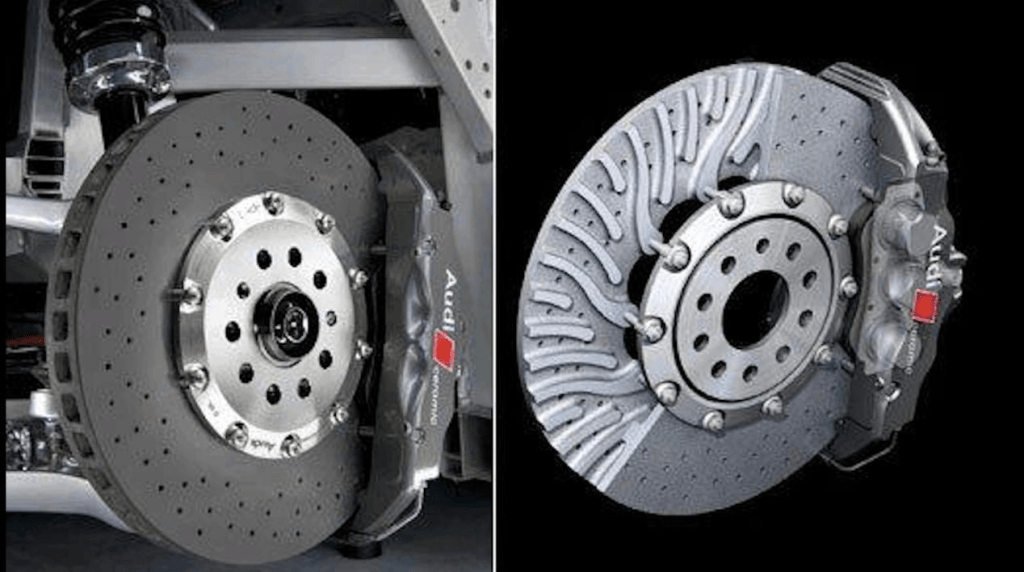
| Application | Description |
| Automotive Parts | High-volume production of engine components, body parts, brackets, and interior components with precise tolerances. |
| Aerospace Components | Manufacturing of critical parts like turbine blades, structural elements, and fasteners that must meet strict performance standards. |
| Consumer Electronics | Mass production of electronic housings, connectors, heat sinks, and other components that require consistency and precision. |
| Industrial Machinery Parts | Production of gears, shafts, housings, and other mechanical parts used in heavy equipment and industrial machinery. |
| Medical Devices | High-volume production of medical CNC components such as surgical instruments, diagnostic equipment, and implants. |
| Home Appliances | Production of parts for refrigerators, washing machines, microwaves, and other household appliances. |
| HVAC and Plumbing Components | Manufacturing parts like valves, pipes, flanges, and connectors for heating, ventilation, and air conditioning systems. |
| Electronic Connectors and Circuitry | Mass production of connectors, terminals, and other components used in electrical and electronic assemblies. |
| Fasteners and Hardware | Production of screws, bolts, nuts, washers, and other fastener products that require high durability and uniformity. |
| Military and Defense Components | Manufacturing parts used in defense systems, weapons, and military vehicles where reliability and precision are critical. |

Key Differences Between Rapid Prototyping and Mass Production in CNC Parts
This chart provides the key differences between rapid prototyping and mass production in CNC machining, focusing on factors like volume, cost, setup, precision, and material use.
| Aspect | Rapid Prototyping | Mass Production |
| Purpose | Create low-volume or one-off prototypes for testing and design iteration. | Produce large quantities of identical parts for final production. |
| Volume | Low-volume, often single parts or small batches. | High-volume production, typically thousands or millions of parts. |
| Lead Time | Short lead time, typically hours or days. | Longer lead time due to setup and tooling, but high-speed once running. |
| Cost per Part | Higher per part due to low volume and design iteration. | Lower per part due to economies of scale and high volume. |
| Precision | High precision for prototyping, but not as consistent as mass production. | Extremely high precision and consistency across all parts. |
| Material Flexibility | High, as prototypes can be made from various materials (plastics, metals, composites). | Limited to materials suited for mass production processes (metals, plastics). |
| Design Flexibility | Very flexible, allowing easy modifications between iterations. | Less flexible; changing the design mid-production can be costly and time-consuming. |
| Setup Costs | Low setup costs; requires minimal tooling or setup. | High setup costs, including custom tooling, fixtures, and programming. |
| Tooling Requirements | Minimal tooling required; often uses standard tools. | Specialized tooling, fixtures, and machines needed for high-volume production. |
| Speed of Production | Quick turnaround for prototypes, but not suited for large quantities. | Fast production for large quantities once setup is complete. |
| Material Waste | Potentially higher due to rapid iterations and design changes. | Optimized for minimal material waste through automated processes. |

Key Factors to Consider for Choosing Between Rapid Prototyping and Mass Production in CNC Parts
- Production Volume and Scalability
Arguably the most important aspect in discerning whether to choose rapid prototyping or mass production is the required parts volume. In cases where only a small batch or just a handful of units are needed, rapid prototyping is expected to be the most viable option. It is used for low-volume production, especially in the initial stages of product development. Prototyping enables engineers and designers to swiftly experiment with ideas, authenticate designs, and carry out modifications in a cost-efficient manner without the risk associated with large-scale production.
With regard to production on a larger scale, one has to consider repetitive mass manufactured production techniques. When identical components are needed on a large scale, that is in the thousands or millions, the use of mass production becomes the most economically viable option.
Once the initial tooling, equipment configuration, and production method are determined, mass production necessitates minimal resource and time expenditure to produce manufactured goods. Given the continuous nature of the production process, mass production can substantially reduce the total per-unit costs to the consumers. However, one should recognize that mass production requires significant capital investment, and becomes most viable when the production volume suffices to cover the setup costs.
- Time Considerations and Project Deadlines
In addition to the volume of production, the time that can be spent to introduce a product to the market is another crucial aspect. Rapid Prototyping is known for its time savings in part production, as components are manufactured in a time span of hours or used in days. This is best suited to design processes that are time sensitive and are moving in pace. Rapid Prototyping is a method that allows for many uninterrupted cycles in the design stage saving time otherwise spent in traditional manufacturing.
In contrast, mass production usually takes longer to prepare for, since it involves additional time for tooling, fixture construction, and CNC machine programming. Although mass production is rapid and capable of creating high volumes of parts efficiently, the initial time investment is considerable. Therefore, mass production is more appropriate for long-term production strategies where, although rapid output is not a primary objective, there is a need to produce parts quickly and in high volumes.
- Design Complexity and Flexibility
Another critical factor when deciding on either rapid prototyping and mass production is design flexibility. During design and testing, rapid prototyping provides unparalleled flexibility. Prototypes are subject to rapid modifications, refinements, and iterations, all of which take place without undue changes to the production setup. This collaborative design approach enables engineers to identify and rectify flaws in real time, which is vital in industries where the ultimate functionality of the product is paramount.
Incorporating new design features into existing setups can be an expensive and slow process. Therefore, mass production works best for products that have a long-lasting design and do not have frequent and significant changes. If a design is completely established, mass production offers high consistency and repeatability regardless of the number of units produced, though it offers a design flexibility which is lower compared to the rapid prototyping alternative.
- Material Selection and Performance Requirements
In the case of CNC manufactured parts, the choice of materials is an important factor when determining if rapid prototyping or mass production is more appropriate. Rapid prototyping can accommodate many different materials, including a number of plastics, metals, and composites; however, specific types of CNC tooling and manufacturing processes do limit material selection. Rapid prototyping excels in that it can use materials that closely match the intended final product, which allows the designer to determine the functional performance of the part in its target use environment.

The materials used in mass production are of higher quality. As projects become mass produced, parts are selected to balance durability, cost, and manufacturability. Furthermore, mass production environments allow parts to be made using specialized materials, such as high-performance alloys, which are difficult to machine in lower-scale production environments. For large-scale production that requires high-performance parts, mass production offers a better solution.
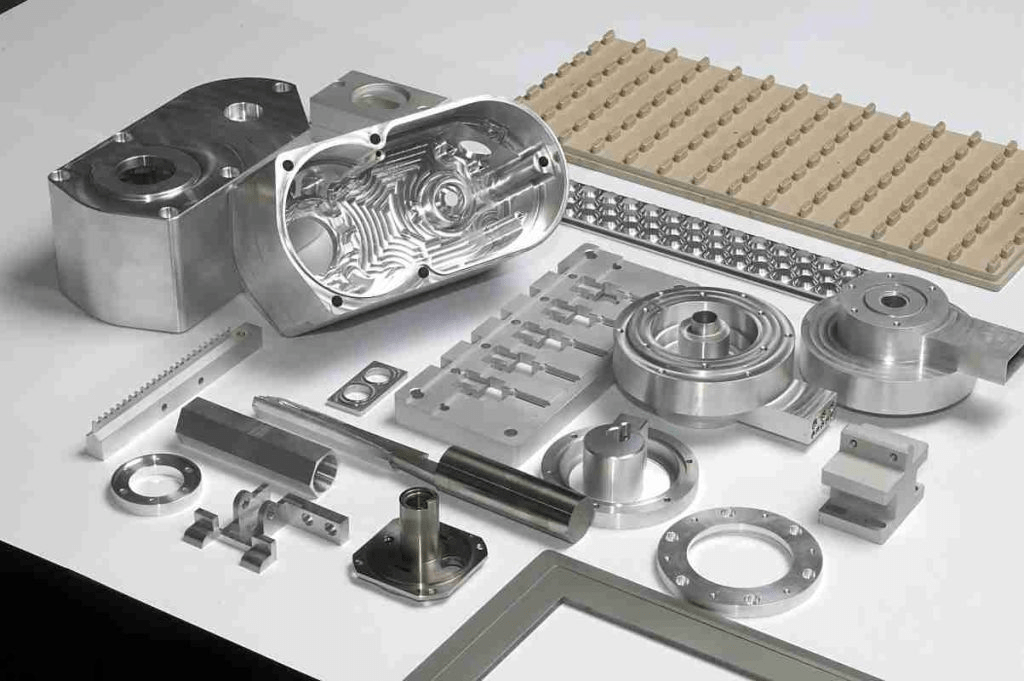
- Cost Considerations
Cost is always a critical factor, and is especially critical to manufacturing decisions. Mass production allows costs to be lower, which is a function of lower costs of production. In contrast, rapid prototyping incurs higher costs as the production is done in smaller batches, or in some cases, a single unit. As there are no specialized tools like dies or molds, production costs get higher due to the inability to lock in a more controlled production environment. Furthermore, rapid prototyping is primarily used for design validations where several prototypes might be needed, and for each prototype, there are several design iterations, which ultimately drives costs higher.
Conversely, the mass production method utilizes economies of scale. Even though the initial investment is considered high due to the expenses incurred in tooling, configuring machines, and developing production processes, the mass production method allows for lower per-unit costs when production reaches optimal levels.
Hence, mass production becomes the optimal method in the manufacturing of large quantities of identical parts. On the other hand, for small production runs or one-off parts, mass production is normally not the most cost-effective method, in which case rapid prototyping would be a better option economically.
- Quality and Consistency
Quality and consistency must be taken into account, especially in industries that deal with high precision. For both rapid prototyping and mass production, CNC machines must be able to produce components with high precision and tight tolerances. Requirements to achieve consistency in mass production are usually automated to facilitate the uniformity and consistency over thousands or millions of components. This guarantees that every component in a mass production lot will abide by the identical specifications, thus making mass production preferable for components that need to be the same, for instance parts in a vehicle or an aircraft.
When high-quality results are sought using advanced CNC machines, rapid prototyping can deliver such results, too. As the rapid prototyping phase of design is usually preliminary, its goal is primarily trialing the part’s form, fit, and function. Ensuring that all parts of a design are consistent is not the main focus. With the design iterations and flaws being corrected through rapid prototyping, the focus can then shift to high-quality mass production, which guarantees that all units of a finished product are identical to one another, and meet the desired specifications.
Summary
- Rapid Prototyping is used as a more flexible and quicker option to iterate, test new ideas, and produce low-volume CNC parts.
- For CNC machining parts where high volume, consistency, and cost-efficiency are required, Mass Production becomes a better option.

Final Thoughts
Rapid prototyping and mass production provide unique advantages depending on the desired objectives for manufacturing CNC parts. An informed decision, weighing the pros and cons of each method, will allow for the most efficient pathway to the desired production.

